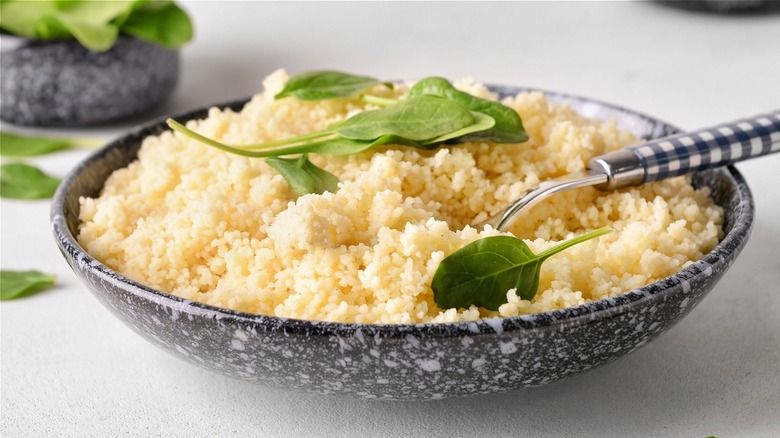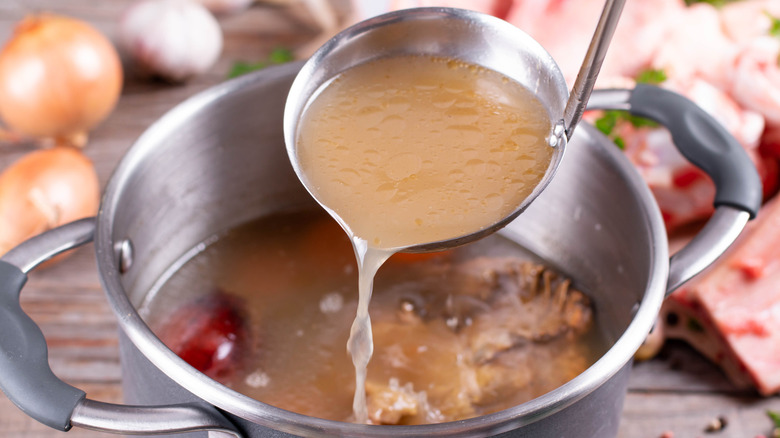The Biggest Mistake You're Probably Making With Couscous
Couscous is a food that reminds us great things come in small packages. It's also a delightful reminder that many traditional foods have a great place in modern kitchens, though they may need a couple of tweaks. Couscous is a staple food in North Africa, and is particularly common in Morocco (via Food Network). The original way of producing Moroccan couscous was pretty labor-intensive: Semolina flour would get mixed with water and then hand-rolled to produce small, but slightly irregular balls, which could then be pressed through a sieve for size and greater uniformity. Since it starts with flour, couscous is technically a type of pasta rather than a grain like quinoa or barley, as people sometimes think.
The historic way of cooking couscous is also a lot of work. The standard method was to steam it — not just once, though, but a full three times (!!!) before it was ready to be served with a saucy main dish. While some couscous connoisseurs may still recommend steaming it multiple times and even making it from scratch, most admit this isn't the most convenient way of cooking (via Cooks Info).
But don't let those old-fashioned approaches confuse you. Boxed couscous doesn't need to be thrice-steamed, and it's an amazing weeknight meal, since it cooks unbelievably quickly. It's so very easy, in fact, that you might be tempted to ignore a few key touches that make your couscous taste really good without too much extra effort.
Say no to water
The simplest change you should make for really great couscous? Not using water. Don't worry, you still cook it in liquid. But water is so... Blah. To give your couscous flavor, you need to switch up the H20 for something more interesting. Broth is the best and obvious choice, per Good Cheap Eats, but if you don't have broth, Bon Appétit suggests seasoning your water with some spices or aromatics, like onion and star anise. It's also important to salt your water. Couscous absorbs all the water that it's cooked in, which means the liquid's flavor matters even more than it does with pasta — and you wouldn't skip the salt when cooking pasta, would you?
Adding flavored liquid to your couscous makes a huge difference in taste while adding no extra time to the recipe. You're better off spending your extra time fluffing your couscous at the end — another step that takes a little bit of time, but yields much better results (per Martino Taste).
It's easy to get quality taste and texture in under 10 minutes, including the time it takes to cook. It might be time to add truly flavorful couscous to your weeknight rotation.

